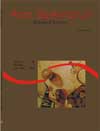<b>Effect of female age and environmental factors on reproduction of the predator <em>Chrysoperla externa</em> (Hagen, 1861) (Neuroptera: Chrysopidae)</b> - DOI: 10.4025/actascibiolsci.v25i2.2014
Abstract
The biotic and abiotic factors affect the reproductive potential of insects. Thus, the effects of female age and environmental factors on reproduction of Chrysoperla externa (Hagen, 1861) (Neuroptera: Chrysopidae) were studied. Adults of the predator were reared in "PVC" cages, closed in the upper portion with a thin mesh, organdie, placed on cotton plants at a greenhouse. The largest production of eggs by female (87.7 eggs) occurred with 49 days and the smallest (32.2 eggs) with 63 days of female age. The remating occurred after the exhaustion of spermatic reservations, starting on 28th day. The fecundity of C. externa females increased with elevation of the relative humidity of air. It was also verified a fast embryonic development with increase of temperature and female age. All these results supply subsidies for knowledge of the reproduction of C. externa in cotton systemDownloads
Download data is not yet available.
Published
2008-04-17
How to Cite
Macedo, L. P. M., Souza, B., Carvalho, C. F., Ecole, C. C., & Goussain, M. M. (2008). <b>Effect of female age and environmental factors on reproduction of the predator <em>Chrysoperla externa</em> (Hagen, 1861) (Neuroptera: Chrysopidae)</b> - DOI: 10.4025/actascibiolsci.v25i2.2014. Acta Scientiarum. Biological Sciences, 25(2), 309-313. https://doi.org/10.4025/actascibiolsci.v25i2.2014
Issue
Section
Biology Sciences
DECLARATION OF ORIGINALITY AND COPYRIGHTS
I Declare that current article is original and has not been submitted for publication, in part or in whole, to any other national or international journal.
The copyrights belong exclusively to the authors. Published content is licensed under Creative Commons Attribution 4.0 (CC BY 4.0) guidelines, which allows sharing (copy and distribution of the material in any medium or format) and adaptation (remix, transform, and build upon the material) for any purpose, even commercially, under the terms of attribution.
Read this link for further information on how to use CC BY 4.0 properly.
0.6
2019CiteScore
31st percentile
Powered by 

0.6
2019CiteScore
31st percentile
Powered by 











1.png)




3.png)













